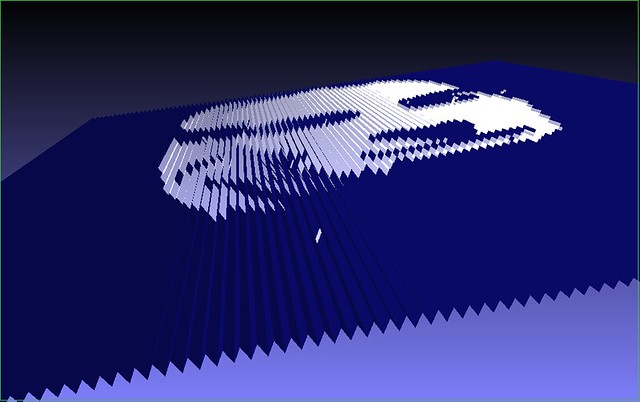Ridge-o-gram proof of concept
This image shows the first output of a program that converts two black and white images into a pair of interlocking 3D models. The models comprise a ridged surface that presents one image when viewed from the left and the other image when viewed from the right. One model represents the white pixels from both images and the other model represents the black pixels from both images (displayed here in blue).
(Astute observers may notice something odd with the perspective in this video clip – foreshortening is reversed. I had inattentively fiddled with the viewer’s settings before recording the video.)

Is there a name for this kind of display? I’m sure I’ve seen folded posters or other artwork that utilizes this effect, but without knowing applicable terms I haven’t had much luck finding examples.
The present implementation is a proof of concept. Only the ridged upper surface is currently generated. The plan is to generate a solid base as well, with the eventual goal of producing a two-piece panel that can be printed as single assembly with a dual-extruder 3D printer like the Makerbot 2X. I’d like to make it available as a web site.

2 Responses to “Ridge-o-gram proof of concept”
Posted by Eeon on Sunday, November 17th, 2013 at 4:10 PM.
Cool! Back in the 90s, movie studios made covers to VHS cassette boxes that worked something like this. I think it is lenticular printing. Here is a crappy image of the cover to Independence Day, showing both “sides” of the image:
Posted by Jim on Sunday, November 17th, 2013 at 8:57 PM.
Yes! Lenticular printing is a good reference. Same idea, with alternating image strips, but with a lens film instead of physical ridges distinguishing the images.